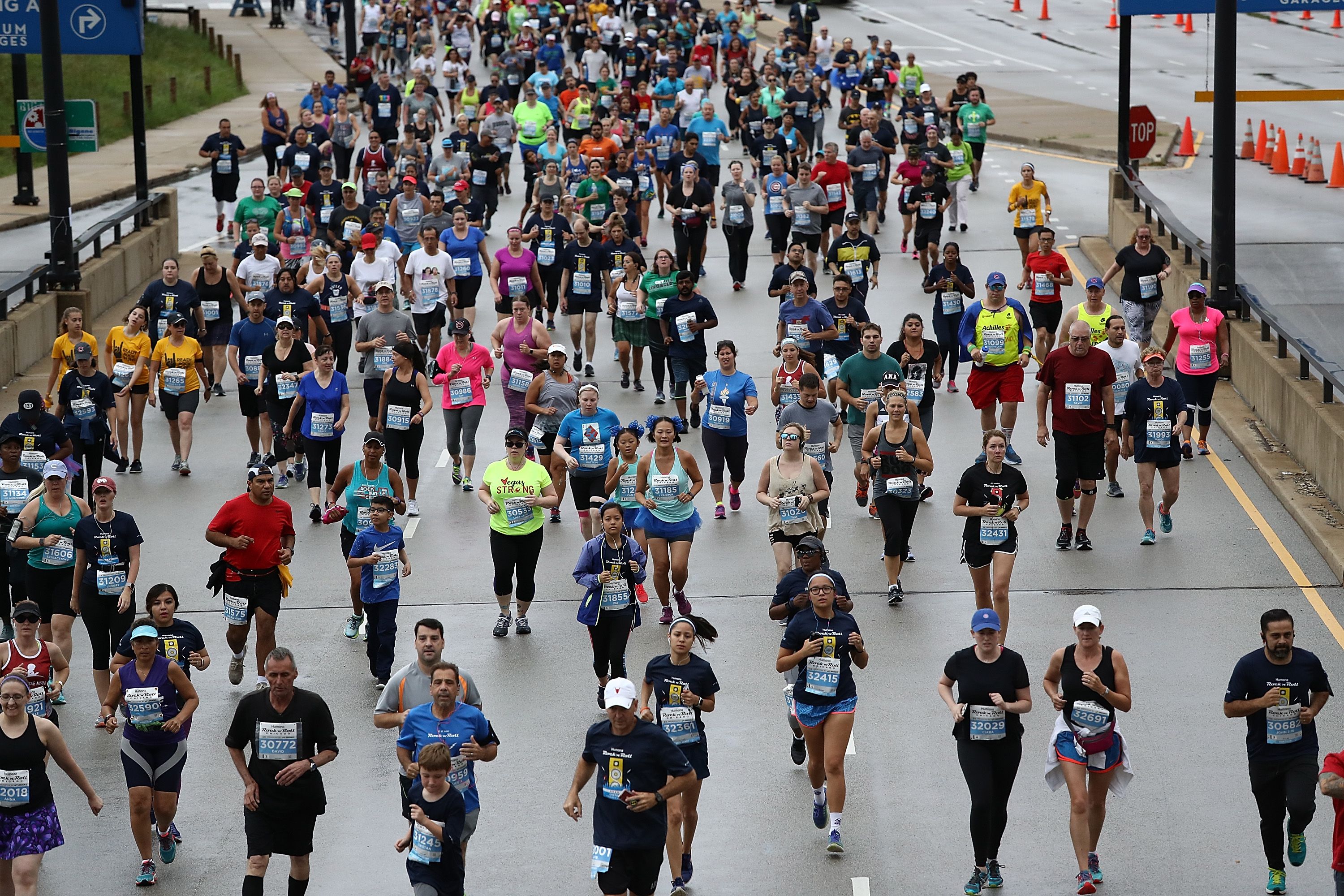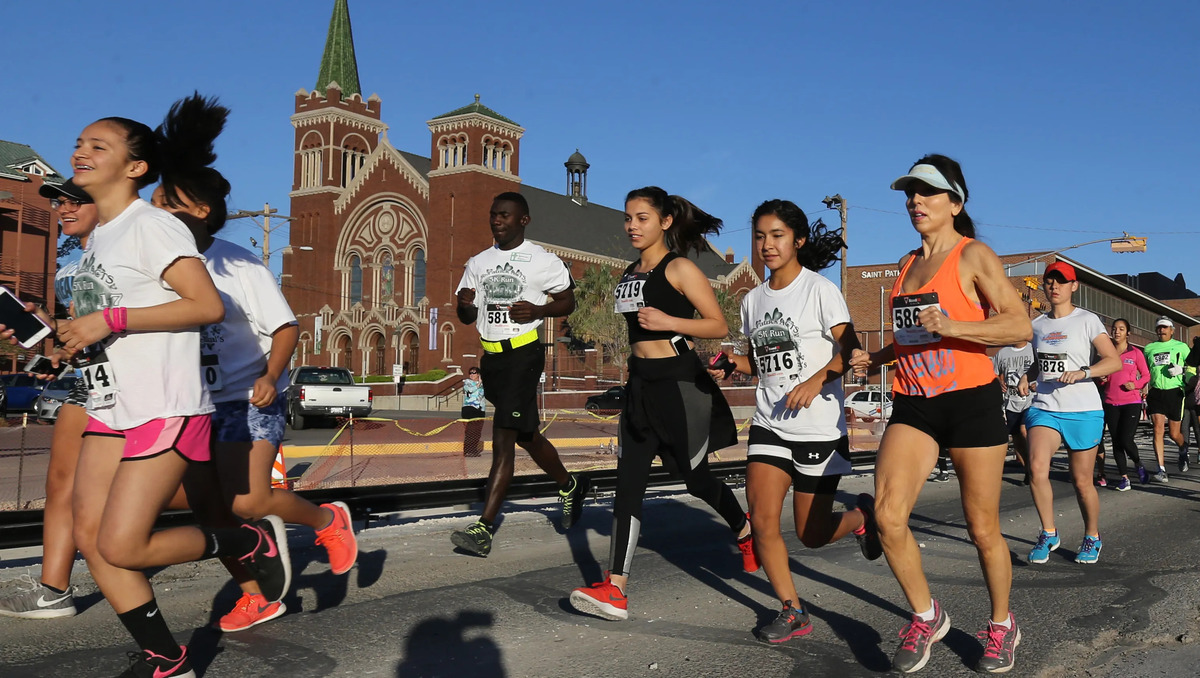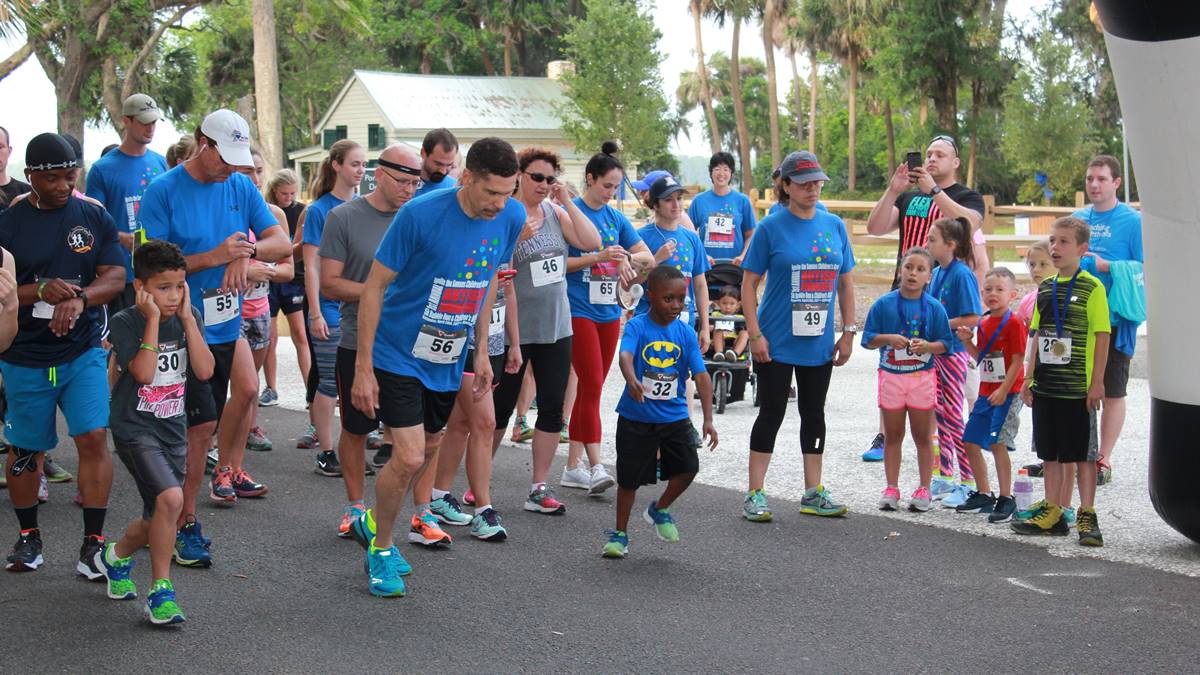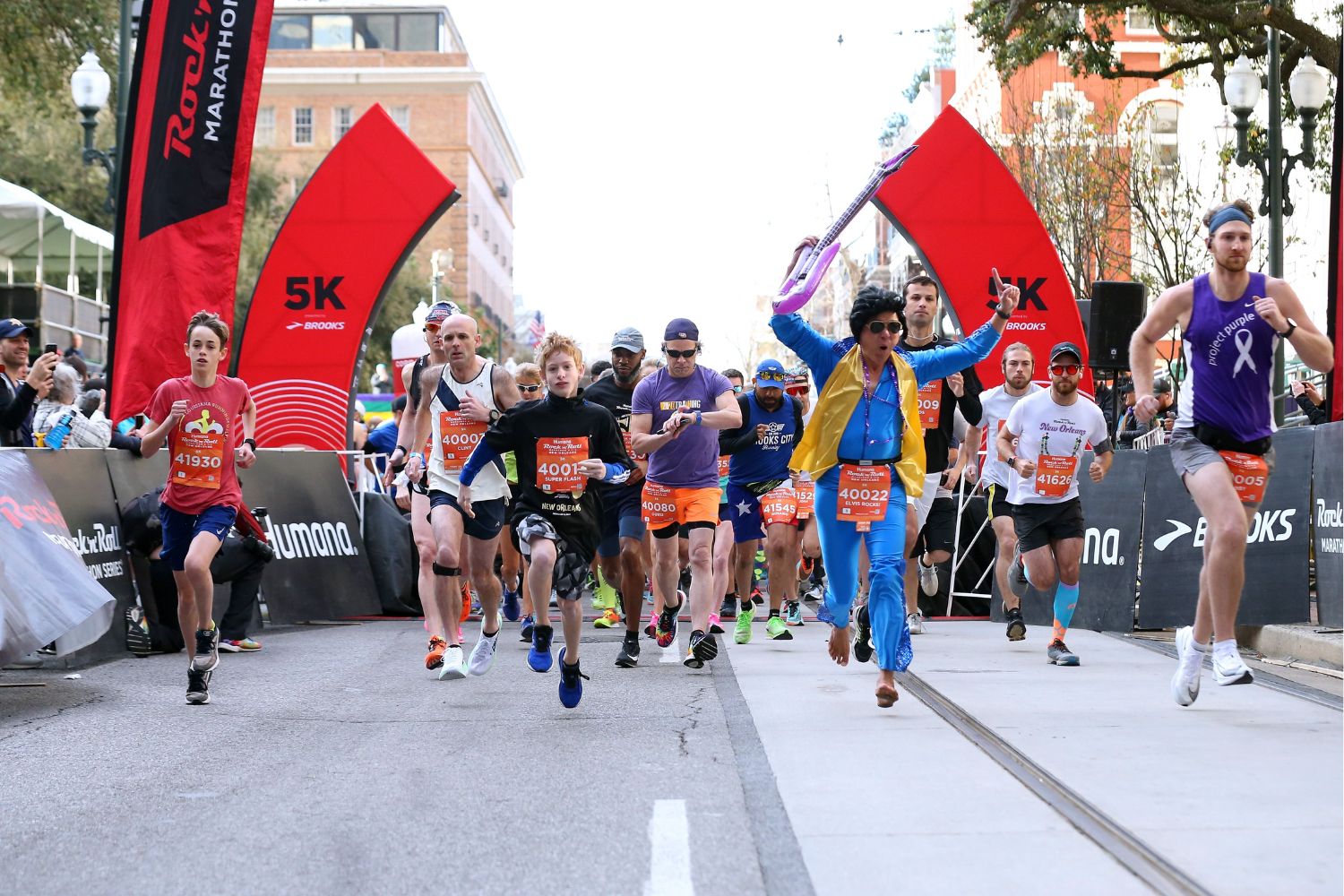

Featured
How Much Is A 5K Run
Modified: August 21, 2023
Discover the cost of participating in a featured 5K run and start your fitness journey today. Find out how much you need to budget for this popular running event.
Introduction
Welcome to the exciting world of 5K runs! Whether you’re a seasoned runner or just starting your fitness journey, participating in a 5K race can be a rewarding and exhilarating experience. From the atmosphere of camaraderie to the sense of accomplishment upon crossing the finish line, a 5K run offers a unique opportunity to challenge yourself and be part of a vibrant community.
But before you lace up your running shoes and hit the pavement, it’s important to understand what a 5K run entails and the factors that come into play, including the costs associated with it. In this article, we will explore everything you need to know about the financial aspects of participating in a 5K run.
In the following sections, we will delve into the definition of a 5K run and why it has become such a popular choice for runners of all levels. We will also discuss the preparation required to tackle a 5K race and the various expenses you may encounter along the way. From registration fees to additional costs, we’ll cover it all.
Furthermore, we’ll provide you with tips on how to save money while still enjoying the experience of a 5K run. So, whether you’re a budget-conscious runner or simply curious about the financial side of 5K races, read on to discover the ins and outs of the cost associated with a 5K run.
By the end of this article, you will have a comprehensive understanding of what it takes to participate in a 5K run and the financial considerations involved. So let’s dive in and explore the wonderful world of 5K runs!
What is a 5K Run?
A 5K run is a race that covers a distance of 5 kilometers, which is equivalent to approximately 3.1 miles. This distance is a popular choice for many runners, as it provides a manageable challenge for both beginners and experienced athletes.
The “K” in 5K stands for kilometer, which is a unit of measurement in the metric system. The race can be organized as a standalone event or as part of a larger running event, such as a marathon or charity race.
5K runs are often open to participants of all ages and fitness levels, making them inclusive and accessible to a wide range of individuals. They are an excellent way to kick-start a fitness routine, set personal goals, and engage in friendly competition.
Typically, a 5K race takes place on roads, trails, or tracks, with a designated route that participants must follow. The course may include various terrains, such as flat stretches, uphill climbs, or downhill descents, adding an element of challenge and excitement.
One of the key features of a 5K run is the vibrant and energetic atmosphere. Participants often gather at the starting line, filled with anticipation and a mix of nerves and excitement. The event is not only about completing the distance but also about enjoying the community spirit, cheering on fellow runners, and celebrating personal achievements.
Many 5K races also incorporate various elements to enhance the overall experience. These may include themed runs, such as color runs or glow runs, where participants are doused in vibrant colors or run under neon lights. Some races even offer unique medals, t-shirts, or other memorabilia as a memento of the accomplishment.
Whether you’re aiming to achieve a personal best, raise money for a charitable cause, or simply enjoy the thrill of running, a 5K race provides an excellent platform to challenge yourself and be part of a larger running community.
Now that we have a clear understanding of what a 5K run is, let’s explore the reasons why so many people are drawn to participate in these races.
Why Run a 5K?
Participating in a 5K run offers a multitude of benefits, both physical and mental. Whether you’re new to running or a seasoned athlete, here are some compelling reasons why you should consider lacing up your running shoes and taking part in a 5K race:
- Physical Fitness: Running a 5K provides a fantastic opportunity to improve your physical fitness. Regular training for the race helps build cardiovascular endurance, strengthens muscles, and improves overall stamina. It’s an effective way to enhance your health and well-being.
- Goal Setting: Setting a goal to complete a 5K race can be incredibly motivating. It gives you something specific to work towards and helps to keep you focused and disciplined in your training regimen. Achieving your goal of crossing the finish line will boost your confidence and sense of accomplishment.
- Community and Camaraderie: 5K races are often filled with a sense of community and camaraderie. You’ll be surrounded by like-minded individuals who share a passion for running and fitness. The support and encouragement from fellow participants can create a motivating and inspiring atmosphere.
- Stress Relief: Running has been proven to be an effective stress reliever. The endorphins released during a run can boost your mood and alleviate stress, anxiety, and depression. Participating in a 5K run can provide a much-needed mental break and help improve your overall well-being.
- Charitable Causes: Many 5K runs are organized to support charitable causes. By participating in these races, you have the opportunity to make a positive impact and contribute to a worthy cause. It’s a chance to give back to your community and make a difference.
Running a 5K is not limited to experienced runners or elite athletes. Whether you’re a beginner or someone who has been inactive for a while, a 5K race can be a great stepping stone towards greater fitness goals. The supportive atmosphere and achievable distance make it an ideal starting point for those looking to embrace a healthier lifestyle.
Now that we’ve explored the benefits and motivations behind running a 5K, let’s move on to the practical aspects of preparing for a 5K race.
How to Prepare for a 5K Run
Preparing for a 5K run requires dedication, consistency, and a well-rounded training plan. Whether you’re a beginner or an experienced runner, here are some essential steps to help you get ready for the race:
- Establish Your Goal: Determine what you want to achieve in the 5K run. Whether it is completing the race, improving your time, or simply enjoying the experience, having a clear goal will provide you with focus and motivation throughout your training.
- Gradually Increase Your Distance: If you’re new to running, it’s important to start slowly and gradually increase your mileage. Begin with a combination of walking and jogging, gradually building up to running the full 5K distance. Gradual progression helps prevent injury and allows your body to adapt to the demands of running.
- Follow a Training Plan: Consider following a structured training plan that incorporates a mix of running, cross-training, and rest days. This will help you build endurance, improve your running form, and prevent overtraining. There are numerous training plans available online or seek guidance from a running coach if needed.
- Strength and Flexibility Training: Incorporate strength and flexibility exercises into your training routine. Strengthening the muscles that support your running can improve performance and reduce the risk of injury. Focus on exercises that target your core, legs, and glutes. Additionally, stretching and foam rolling can enhance flexibility and aid in recovery.
- Proper Nutrition and Hydration: Fuel your body with a balanced and nutritious diet that includes a mix of carbohydrates, proteins, and healthy fats. Hydration is also crucial for optimal performance, so make sure to drink enough water throughout the day and during your training runs.
- Race-Day Preparation: Familiarize yourself with the race route and any specific race-day instructions. Plan your attire, including comfortable running shoes, moisture-wicking clothing, and accessories such as a running watch or fitness tracker. Arrive at the race venue early to warm up, use the restroom, and mentally prepare yourself for the race.
- Listen to Your Body: Pay attention to any signs of fatigue, discomfort, or pain during your training. Rest and recovery are essential components of any training program, so don’t hesitate to take a break or seek medical advice if needed. Pushing through injuries can worsen the condition and hinder your progress.
Remember, each individual is different, and what works for one person may not work for another. It’s important to listen to your body, make adjustments as needed, and enjoy the process of training for a 5K run.
Now that you understand how to prepare for a 5K run, let’s delve into the financial aspects of participating in such an event.
The Cost of Participating in a 5K Run
Participating in a 5K run comes with certain costs that you need to consider. While the actual expenditure can vary depending on factors like location, event type, and organization, understanding the common expenses will help you plan your budget accordingly.
Let’s take a closer look at the different cost aspects associated with participating in a 5K run:
- Registration Fee: The registration fee is the primary cost of entering a 5K race. This fee covers the administrative expenses associated with organizing the event, including course setup, race timing, and participant amenities. The amount can differ significantly from race to race, with factors like race size, event location, and prestige affecting the cost.
- Early Bird vs. Regular Registration: Many races offer an early bird registration period, allowing participants to take advantage of discounted rates if they sign up well in advance. Regular registration fees generally apply closer to the race date. It’s advisable to register early to secure lower fees and guarantee your spot in popular races.
- Optional Race Add-Ons: Some races offer additional add-ons that can enhance your race experience. These may include items like commemorative t-shirts, finisher medals, race photos, or access to post-race celebrations. While these extras are not mandatory, they can add to the overall cost if you choose to avail of them.
- Travel and Accommodation: If the race is located outside your local area, you may need to factor in travel and accommodation costs. This includes expenses such as transportation to the race venue, overnight stays, and meals. Calculating these costs is important, especially for destination races or races that require extensive travel.
- Training and Gear: While not directly associated with the race entry, training for a 5K run may involve certain expenses. This can include purchasing suitable running shoes, comfortable workout attire, and any necessary accessories such as a water bottle, running watch, or fitness tracker. Additionally, some runners choose to invest in coaching or join a running club for guidance and support.
- Charitable Donations: Many 5K races are organized to support charitable causes, and participants are often encouraged to fundraise or make voluntary contributions. While these donations are optional, they provide an opportunity to give back and support the mission of the organization hosting the race.
Keep in mind that the overall cost of participating in a 5K run will vary from person to person based on personal preferences and circumstances. It’s important to consider your budget and prioritize the expenses that align with your goals and needs.
Next, we will explore the different factors that can influence the cost of a 5K run, giving you a better understanding of how various elements impact the overall expenditure.
Factors Affecting the Cost of a 5K Run
The cost of participating in a 5K run can vary depending on several factors. Understanding these factors will give you an idea of why the costs associated with different races can differ significantly. Here are some key factors that influence the overall expenditure:
- Location: The location of the 5K race plays a vital role in determining the cost. Races held in major cities or popular tourist destinations tend to have higher expenses due to venue rentals, permits, and other logistical considerations. On the other hand, smaller community races in less urban areas may have lower costs associated with them.
- Event Size and Prestige: The size and prestige of the event can impact the registration fee. Larger races with a higher number of participants often require more resources, such as additional staff, extensive course management, and increased security measures. These factors can contribute to a higher cost per participant.
- Race Amenities and Extras: The amenities provided by the race organizers can influence the overall cost. Races that offer additional perks like race t-shirts, finisher medals, or post-race celebrations may have higher registration fees to cover these extras. Consider the value of these amenities when assessing the overall cost of the race.
- Race Timing and Seasonality: The timing of the race can impact the cost as well. Races held during peak running seasons or on popular holidays or weekends may have higher registration fees due to increased demand. Similarly, races held during off-peak periods or on weekdays may offer lower prices to attract participants.
- Charitable Component: If the 5K run is organized to support a charitable cause, the cost may be influenced by the fundraising goals of the event. In such cases, registration fees may be lower, but participants are often encouraged to make voluntary donations or engage in fundraising efforts to contribute to the cause.
It’s important to consider these factors when evaluating the cost of a 5K run. Depending on your preferences and budget, you may choose to participate in races that align with your financial capabilities or prioritize events that offer specific amenities or charitable opportunities.
Now that we understand the factors that influence the cost of a 5K run, let’s delve into the typical registration fees you can expect for these races.
How Much Does Registration for a 5K Run Typically Cost?
The registration fees for 5K runs can vary widely depending on several factors, including the location, event size, amenities offered, and the charitable component. Here’s a general overview of the typical registration costs you can expect for a 5K run:
- Local Community Races: Local community races often have lower registration fees, ranging anywhere from $20 to $40. These races may not offer as many amenities or extras but provide a more affordable option for participants.
- Medium-Sized Races: Medium-sized races, especially those held in popular running destinations, can have registration fees ranging from $40 to $60. These races may offer additional amenities like race t-shirts or finisher medals.
- Large-Scale and Major City Races: Larger races, such as those held in major cities or renowned marathons, often come with higher registration fees. These can range from $60 to $100 or more, depending on the event’s prestige and the level of amenities provided.
- Charity Runs: Some 5K races are organized with a primary focus on supporting charitable causes. In these cases, registration fees may be relatively lower, with organizers encouraging participants to make additional donations or engage in fundraising activities to contribute to the cause.
It’s important to note that these registration fee ranges are general estimates and can vary based on location, event size, and other factors mentioned earlier. Additionally, early bird registration options may offer discounted rates for those who sign up well in advance.
Keep in mind that while registration fees are the primary cost of participating in a 5K run, there may be additional expenses to consider, such as travel and accommodation if the race is in a different location, as well as any optional race add-ons or equipment needed for training.
With this understanding of typical registration fees, let’s explore additional expenses that you may encounter when participating in a 5K run.
Additional Expenses to Consider
Participating in a 5K run involves more than just the registration fee. There are some additional expenses that you should keep in mind when planning and budgeting for the race. While these expenses may vary depending on individual preferences and circumstances, here are some common additional costs to consider:
- Travel and Accommodation: If the 5K race is taking place in a different location, you may need to budget for travel expenses, including transportation costs such as flights or gas, as well as accommodation expenses for overnight stays.
- Training and Gear: Proper training for a 5K run may involve investing in suitable running gear, including running shoes, apparel, and accessories such as moisture-wicking clothing, running socks, and a water bottle. Although these are one-time expenses, they should be considered when budgeting for the race.
- Race Add-Ons: Some races offer optional add-ons that participants can purchase to enhance their race experience. These may include commemorative t-shirts, finisher medals, race photos, or access to post-race celebrations. While these add-ons are not mandatory, they can add to the overall cost if you choose to include them.
- Transportation on Race Day: Depending on the location and logistics of the race, you may need to factor in transportation costs on the day of the event. This may include parking fees or public transportation fares if they are required to reach the race venue.
- Food and Pre-Race Nutrition: Fueling your body properly before the race is essential. Consider the cost of pre-race meals, snacks, and any nutrition products or supplements that you may choose to consume for optimal performance during your training and on race day.
- Post-Race Recovery: After completing the race, you may want to relax and recover. This can involve expenses such as post-race meals, massage therapy, or purchasing recovery aids like foam rollers or compression gear to aid in recovery.
Remember, these additional expenses can vary depending on personal choices and circumstances. Consider your budget and prioritize the expenses that align with your goals and preferences.
Now that we have explored the additional costs associated with participating in a 5K run, let’s move on to some tips for saving money while still enjoying the experience.
Tips for Saving Money on a 5K Run
Participating in a 5K run doesn’t have to break the bank. With some strategic planning and budgeting, you can save money while still enjoying the experience. Here are some tips to help you save on your 5K race:
- Register Early: Take advantage of early bird registration discounts. Many races offer reduced rates for participants who sign up well in advance. By registering early, you can secure a lower registration fee and guarantee your spot in popular races.
- Look for Local Community Races: Consider participating in local community races as they often have more affordable registration fees compared to larger, more prestigious events. Supporting local races not only saves money but also fosters community spirit.
- Car Pool or Share Accommodation: If the race requires travel or overnight stays, consider carpooling with fellow participants or sharing accommodations with friends to split the expenses. This can significantly reduce transportation and lodging costs.
- Prepare Your Own Meals: Instead of relying on expensive pre-race meals or post-race dining, prepare your own nutritious meals and snacks. Pack a post-race recovery bag with homemade snacks and beverages, helping you save money while still refueling properly.
- Opt Out of Optional Add-Ons: Carefully evaluate optional add-ons offered by the race organizers. While they may enhance your race experience, they are not essential. Choosing to opt-out of these extras can help lower the overall cost of the race.
- Find Sponsorship or Fundraising Opportunities: Explore sponsorship or fundraising opportunities available for the race. Some races have partnerships with local businesses or offer incentives for participants who raise funds for a charitable cause. Taking advantage of these opportunities can offset your expenses and even turn the race into a fundraising endeavor.
- Utilize Free Training Resources: Instead of investing in costly training programs or personal coaching, leverage free training resources available online. There are numerous websites, apps, and running communities that offer training plans, tips, and support at no cost.
- Borrow or Buy Used Gear: Instead of buying brand new running gear, consider borrowing from friends or buying gently used items. Many runners sell their lightly-used gear at a fraction of the original cost. This allows you to save money while still having the necessary equipment for training and race day.
- Take Advantage of Volunteer Opportunities: Some races offer discounts or even free race entries to volunteers. Consider volunteering at other races to earn credit towards future events, allowing you to participate without the financial burden.
By implementing these money-saving tips, you can enjoy the experience of a 5K run without stretching your budget. Remember, participating in a 5K should be about the joy of running and achieving personal goals, regardless of the cost.
Now let’s wrap up our discussion on the financial aspects of a 5K run.
Conclusion
Participating in a 5K run is an exhilarating experience that offers numerous physical, mental, and communal benefits. While there are costs associated with joining a race, understanding these expenses can help you plan and budget effectively.
From registration fees to travel expenses and optional add-ons, it’s important to consider all the financial aspects before committing to a 5K run. By evaluating factors such as the race location, size, and offerings, you can make informed decisions that align with your budget and goals.
Additionally, there are various ways to save money without compromising your experience. Registering early, exploring local community races, carpooling, preparing your own meals, and utilizing free resources are just a few of the strategies that can help you cut costs while still enjoying the race.
Remember, the true value of a 5K run extends beyond the financial aspect. It’s about challenging and pushing yourself, being part of a supportive community, and experiencing the thrill of crossing that finish line. So, whether you’re a seasoned runner or just starting your fitness journey, don’t let the costs deter you from participating in this rewarding and empowering event.
Now that you have a comprehensive understanding of the financial considerations of a 5K run, it’s time to lace up your running shoes, hit the pavement, and embark on an incredible journey towards achieving your running goals.









